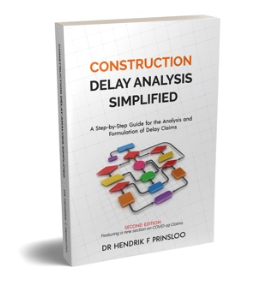HOW TO BE CAPTIVATING AND PERSUASIVE
FORMULATION | ANALYSIS | MANAGEMENT
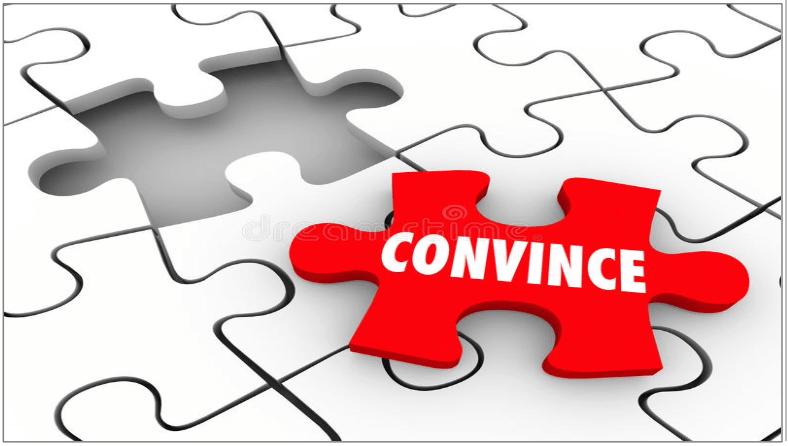
On one of the coldest days in the history of the state of Florida, a message that failed to persuade the audience was the trigger for a catastrophic event that ended the lives of a talented teacher, a highly qualified pilot, and 5 astronauts.
No matter if you are a trial attorney trying to convince a jury, presenting your service to a potential client, or trying to convince management of the appropriate action to take on a construction site, the persuasiveness of your message will ultimately be the key to success.
In business and life, success is often
defined by how we present the points we trying to get across. How can we captivating to lead our audience to a state of persuasion in a world dominated by constant electronic distractions?
The article answers this question by reviewing the latest research on decision-making, brain function, cognition and obstacles in the path to persuasiveness. The article explains techniques that can be easily applied to ensure your message is captivating and persuasive.

Dr Hendrik Prinsloo is an author, expert witness, researcher, and specialist in the field of schedule analysis.
NASA and the O-ring Experiment


In the days leading up to the space shuttle launch, Robert Lund, the vice president of engineering, of the shuttle booster rocket manufacturer communicated in a memo to NASA that a launch at temperatures. below 53°F (12°C) should be avoided.1 NASA was not convinced because hard test data proofing that the O-rings might fail below a specific temperature threshold was not available. Sadly, if the warning from the engineering team was persuasive enough to convince NASA of the seriousness of the risk, this tragedy could have been avoided. It is difficult to pinpoint why the memo written by the manufacturer’s O-ring expert failed to convince NASA. During the commission of inquiry, the famed physicist, Richard Feynman explained the O-ring failure with a very simple experiment. He dropped a clammed piece of O-ring material into a glass of ice water, showing that the O-rings cannot expand to seal the joints under cold temperatures. We will never know if the NASA management would have been persuaded if this experiment was presented before the launch.
Decisions - How The Mind Works
Research in the field of neuroscience provides a window into our minds to understand what is involved in decision-making. A model for decision-making was developed by Sohrad Moghadam, Farid Khodadad, and Vahid Khazaeinezhad in a cross-discipline research initiative2. A simplified version of their model is provided below.
The mind is sometimes described as a meaning-making machine. We are bombarded with countless stimuli each second of every day. Our mind utilizes certain techniques to make sense of the overload of information.
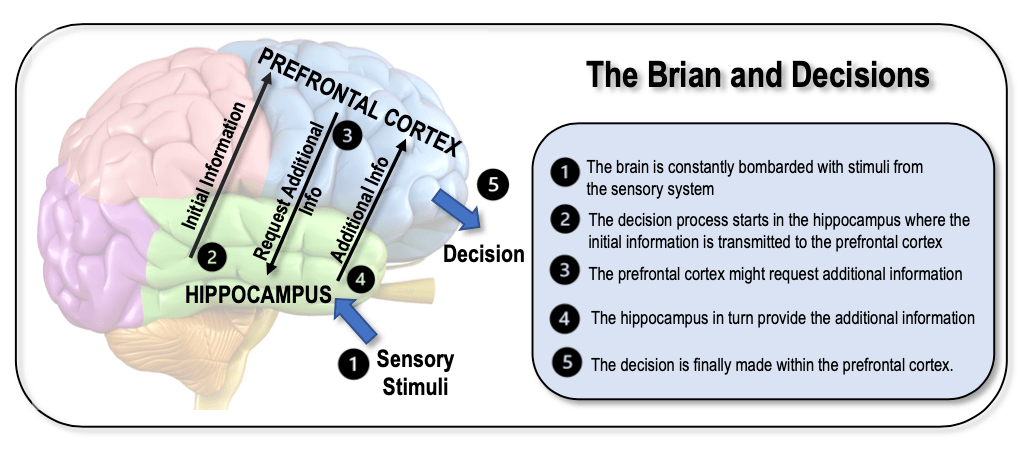
Paris, the Bird, and the Cat
The image below is an example used by Cognitive Psychologist, Prof Alan Castel to explain how our minds take shortcuts to interpret information3. We tend to read the sentence in the first triangle as “Paris in the Spring” but when we take more time to carefully study it, the actual wording is “Paris in the the Spring”. In the second image, we read the words as “THE CAT” even though the “H” and “A” is represented with the same letter. This is an example of how our minds filter information to limit it to what is essential to meet the goal we have in mind.
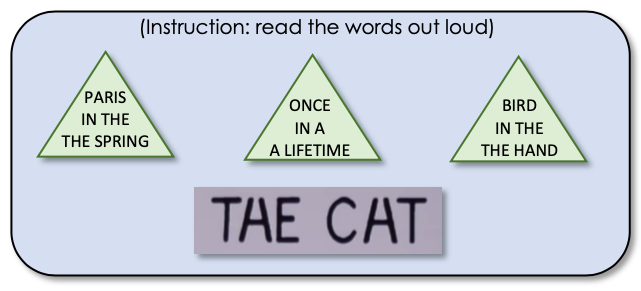
The Invisible Gorilla
The Invisible Gorilla, the now famous experiment by Cognitive Scientist, Daniel Simons demonstrates the limitation of human perception. If you are not familiar with the experiment, go and watch the video before continuing with the article:
In the experiment, 2 teams with different color shirts pass a ball to each other. The observer is asked to count the number of times the team in white passes the ball. Most observers are so focused on the objective to count the number of passes that they do not see a massive gorilla walking among the players. This experiment shows how our mind blocks out information to focus on what we deem as important to complete the task at hand.
The Learning Style Fallacy
Over the years several theories were developed that hypothesized that individuals learn and retain information in different ways. The most notable, perhaps, is the VARK model developed by New Zealand teacher, Neil Fleming. The VARK model and other learning style models theorize that
individuals retain information most effectively if it is presented in their preferred learning style. The VARK model identifies 4 distinct learning styles: visual, auditory, read/write, and kinesthetic.
Several experiments on college campuses failed to show any improvement in the effectiveness of
how we retain information if the information is presented in the student’s preferred learning style4.
If utilizing an individual’s preferred learning style to present information does not approve the person’s ability to retain your message, how should we then present our messages?
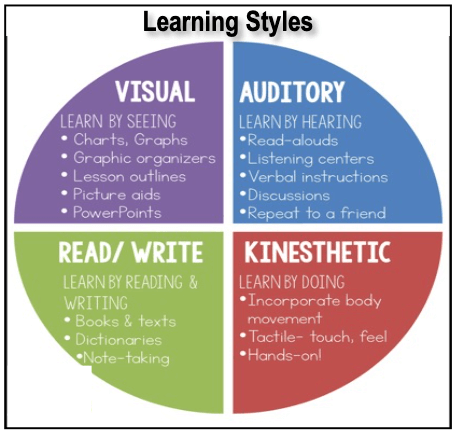
HOW TO BE PERSUASIVE?
If we want to succeed in being persuasive, we need to overcome the overload of stimuli the brain needs to navigate. How do we ensure our audience truly listens to us in a world where we get bombarded with information all the time? And if we have our audience’s attention, how do we present our message that it is persuasive?
The Power of a Picture
People say that a picture is worth a thousand words but if it comes to persuasiveness a picture is even worth more. In a recent experiment5, the level of persuasiveness of written research results was tested by presenting them in 3 different ways. The research was presented as a narrative with images, a narrative with bar graphs, and a narrative with no images. The narrative that included the images resulted in higher ratings of persuasiveness for arguments made in those articles compared to those that included only narrative or narrative with graphs.
The Multi-Media Effect
Strong evidence exists that if information is presented in a multi-media format that integrates audio and visual elements it improves our ability to retain information. A study was conducted where random people were asked to try and recall random objectives. Two different approaches were followed to show the objects to the participants. The first approach used flip cards that only displayed an image of the object. The second approach included an image of the objective with a word describing the objective and the word was read out loud to the participants. All the participants showed a significant increase in the ability to recall when the multi-media approach was used.
The Level of Information
How much information do we need to make a decision? We might think that increasing the level of information available would make it easier to decide. Mikael Krogerus & Roman Tschappeler researchers in the field of strategy and decision- making developed the following model on the optimum level of information required to enhance the ability to make decisions6.
The model demonstrates that too much or too little information available would both cause a state of confusion where decision-making is difficult.
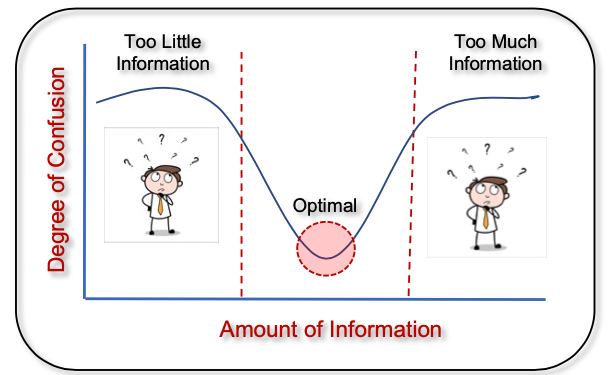
We think in Stories
Stories have been embedded in human culture for thousands of years. The origins of stories can be traced back 30 000 years. Perhaps the most potent power of stories lies in their ability to generate emotion. A comprehensive study7 of research conducted over the past 35 years revealed that emotions constitute potent, pervasive, and predictable drivers of decision-making. Stories can be extremely effective in harnessing emotion to increase persuasiveness.
Research conducted by Phillip Mazzocco and Melanie Green8 Identified the following factors that contribute to narrative transportation and persuasiveness of stories:

A more comprehensive explanation of storytelling is tool of persuasion is available in the following article: Storytelling as a tool of persuasion in disputes – Dr HF Prinsloo
You Decide
In essence, you do not necessarily want the audience to remember the content of the information you are presenting but rather the underlining message. In general, people tend to value their own opinion above an opinion or statement from someone else. The key to being truly convincing is to provide your intended audience with sufficient information to enable them to form an opinion that is in line with the message you trying to get across. The best way to achieve this is to provide information that points to a specific conclusion without providing the conclusion.
References
- Utah engineers’ warning was ignored before Challenger explosion 30 years ago – The Salt Lake Tribute. https://archive.sltrib.com/article.php?id=3464503&itype=CMSID#gallery-carousel-446996
- Saberi Moghadam S, Samsami Khodadad F, Khazaeinezhad V. An Algorithmic Model of Decision Making in the Human Brain. Basic Clin Neurosci. 2019 Sep-Oct;10(5):443-449. doi: 10.32598/bcn.9.10.395. Epub 2019 Sep 1. PMID: 32284833; PMCID: PMC7149951
- Alan Castel. How we learn as we age. TEDx Presentation, March 2018. https://www.youtube.com/watch?v=g5jUjOr7G8M
- Veritasium. The biggest myth in education. March 2022. https://www.youtube.com/watch?v=rhgwIhB58PA
- McCabe, D. P., & Castel, A. D. (2008). Seeing is believing: The effect of brain images on judgments of scientific reasoning. Cognition, 107(1), 343–352. https://doi.org/10.1016/j.cognition.2007.07.017
- Mikael Krogens & Roman Tschappeler. How to make good decisions. TEDx Presentation, June 2016. https://www.youtube.com/watch?v=KkyzYjPuxK8
- Jennifer S., & Lerner, Ye Li, Piercarlo Valdesolo, Karim S. Kassam. 2015. Emotion and Decision Making. Annual Review of Psychology 2015 66:1, 799-823
- Mazzocco, P.J., & Green, MC. 2011. Narrative Persuasion in Legal Settings: What’s the Story? American Society of Trial Consultants Volume 23, Issue 3, May 2011
